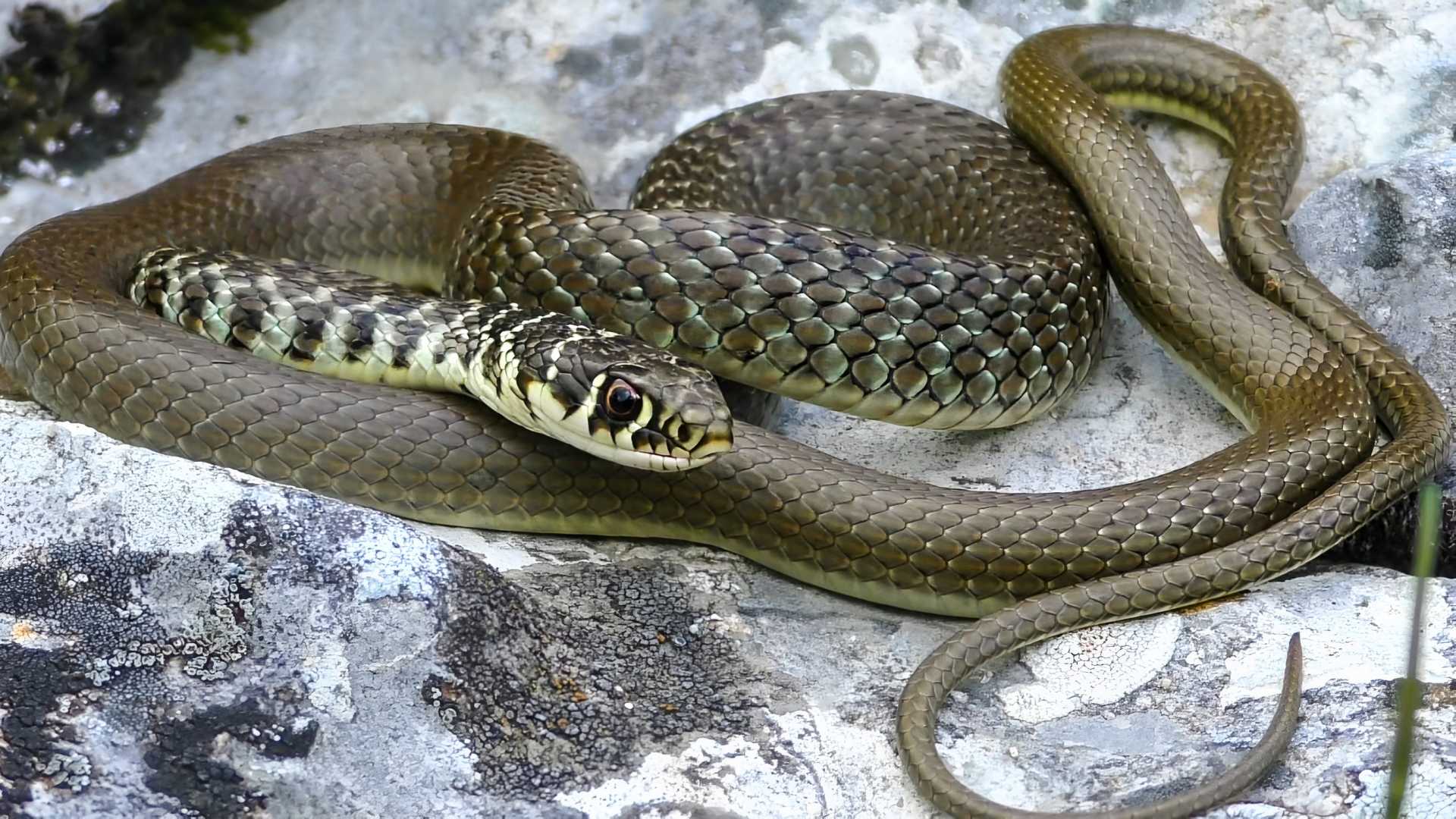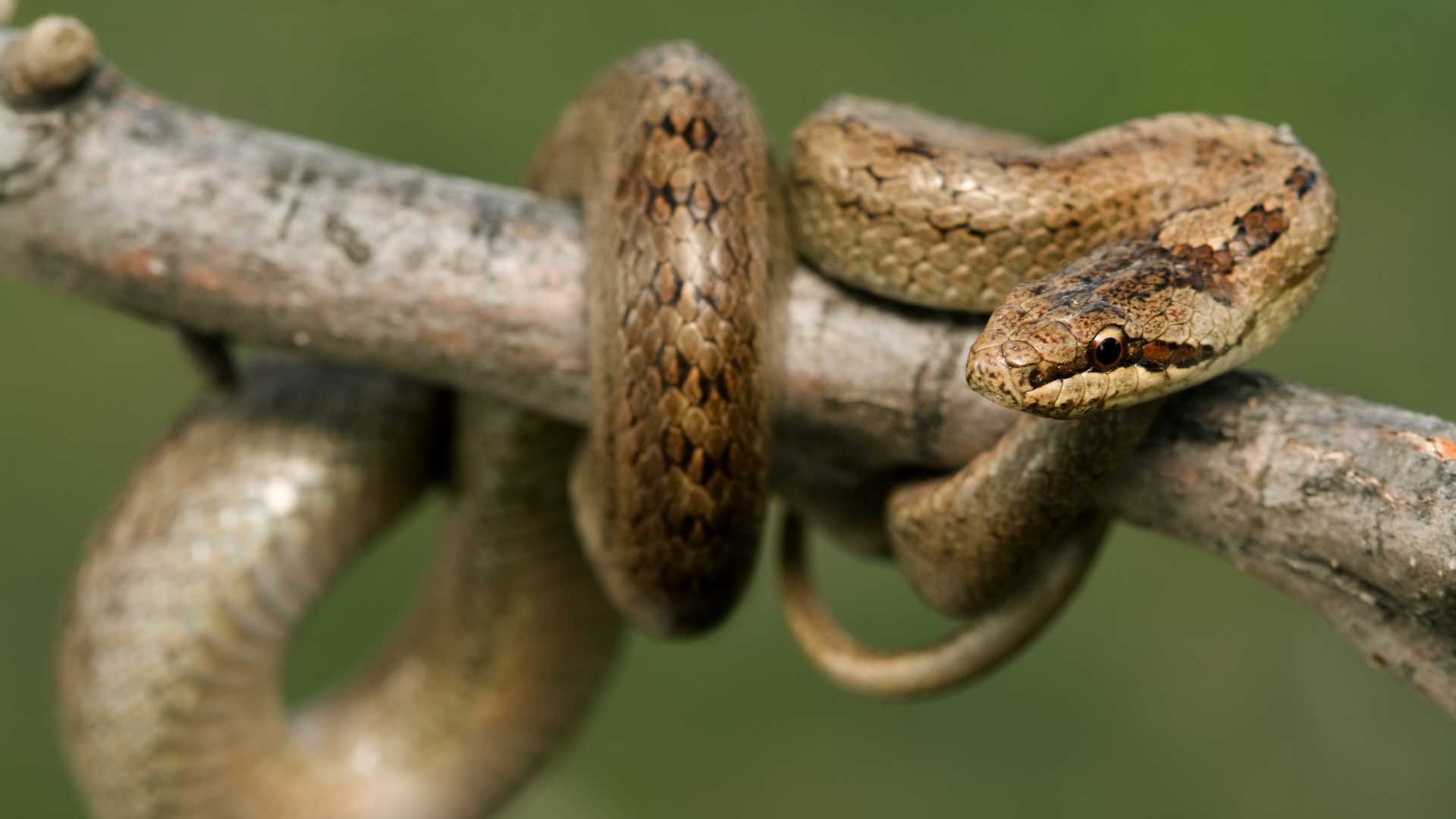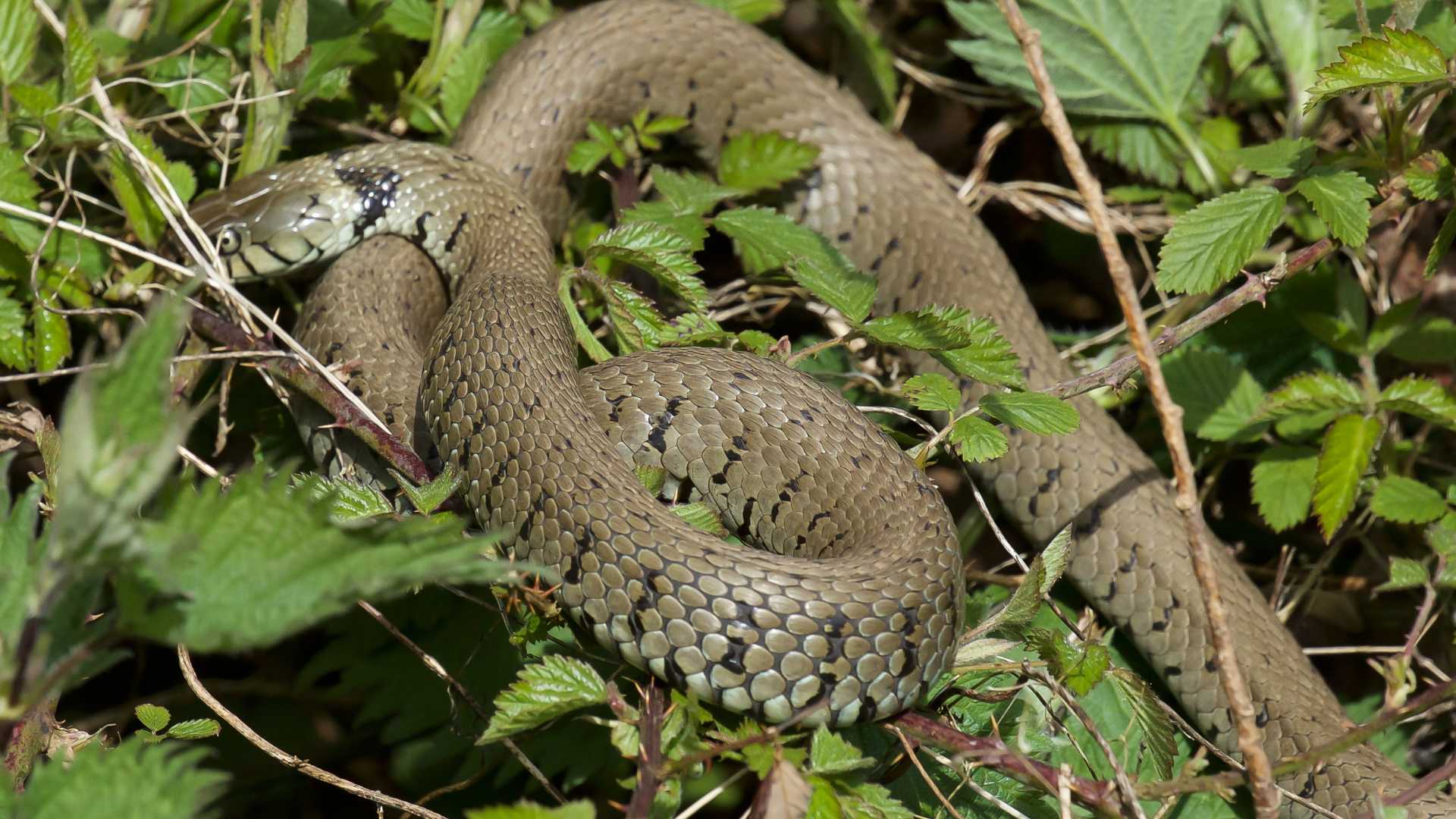
Whip Snake (Hierophis viridiflavus)
Description:
The whip snake is one of the most common species on Mount Etna. It is a slender snake that can reach a length of 150 cm. Its coloration varies: some individuals are completely black, while others have a yellow and black banded pattern.
Behavior:
It is an agile and fast snake, primarily active during the day. It is not venomous and tends to flee when it feels threatened. However, it can become aggressive if captured, biting repeatedly, but its bite is not dangerous.

Smooth Snake (Coronella austriaca)
Description:
The smooth snake is a small species, usually measuring 50-70 cm in length. It has a slender body and a coloration that ranges from gray to brown, with dark spots along its back.
Behavior:
It is a discreet and nocturnal snake that often hides under stones. It is not venomous and rarely bites, even when handled.

Grass Snake (Natrix natrix)
Description:
The grass snake is a water-dwelling snake that can be found near streams or wet areas on Mount Etna. It can reach up to 120 cm in length and has a grey-greenish coloration with a distinctive yellow “collar” behind its head.
Behavior:
It is a non-venomous and non-aggressive species. It primarily feeds on amphibians and fish. When threatened, it can emit an unpleasant odor as a defense mechanism.

Asp Viper (Vipera aspis)
Description:
This is the most dangerous species found on Mount Etna, although encounters are rare. The asp viper can reach a length of 70 cm. Its coloration varies from gray to brown, with a zigzag pattern along its back.
Behavior:
The viper is a rather shy snake that tends to avoid humans. However, if threatened, it may bite. Its bite is venomous and can be dangerous, especially for children, the elderly, or people with health issues. Symptoms of a bite include pain, swelling, nausea, and, in rare cases, severe reactions.
How to Protect Yourself from Snakes on Etna
- Wear appropriate clothing: When hiking on Mount Etna, it is advisable to wear high shoes, thick socks, and long pants to reduce the risk of snake bites, especially in areas with dense vegetation or rocks.
- Pay attention to the terrain: Always watch where you step, particularly in areas with stones, rocks, or tall vegetation, where snakes might be hiding.
- Avoid disturbing snakes: If you spot a snake, it is best to leave it alone and calmly move away. Do not attempt to capture it or get too close.
- Use a trekking pole: A trekking pole can be useful for probing the ground ahead of you, scaring away any hidden snakes.
- Be prepared: Carry a first aid kit and know the local emergency numbers. In case of a viper bite, seek medical assistance immediately, remain calm, and immobilize the bitten limb to slow the spread of venom.
By following these precautions, you can safely enjoy the natural beauty of Mount Etna while minimizing the risk of unwanted encounters with snakes.
